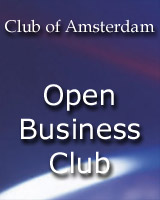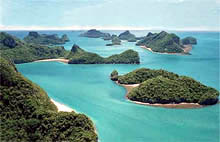
Extreme Engineering
Extreme Engineering
By Discovery.com
Extreme Engineering unveils some of the most ambitious architectural plans of our times. Some are theoretical; others are in the works. But all must face challenges that stretch the definition of what’s possible.
Tokyo’s Sky CityIt would house 35,000 residents and host 100,000 daily workers, students and visitors. This space-age city in the sky might seem like science fiction, but it answers some questions about where humans might live as our most crowded cities become even more densely populated.
Transatlantic Tunnel
So, if you could take the train from New York and in less than an hour reach London, would you do it? What if you had to make the journey through a tunnel 150 feet under the Atlantic? And on a magnetically levitated train traveling at 5,000 mph?
City in a Pyramid
Imagine a self-sustaining pyramid-shaped city in the air. And imagine that it is built by robots and with little help from human workers.
Bridging the Bering Strait
For the first time since the ice age, there could be a bridge across the Bering Strait linking Asia and North America. First, engineers must learn to deal with 55 miles of violent seas and crushing ice over the Arctic Ocean.
Tunneling Under the Alps
How might Europe be different if the great land barrier of the Alps could easily be traversed via tunnels?
Building Hong Kong’s Airport
In the 1990s, Hong Kong undertook one of the largest civil engineering projects in history when it decided to build a new international airport 16 miles out to sea. See how it was done.
Holland’s Barriers to the Sea
Most of Holland is below sea level, the nation a drainage basin for three major rivers. Its people have fought back against floods since the Middle Ages. But now, they have massive, computer-controlled sea barriers and dams doing the trick.
Boston’s Big Dig
How do you put a new, 10-lane highway 120 feet below downtown Boston without succumbing to crumbling earth, and without endangering the buildings and people above? It’s happening right now.
Widening the Panama Canal
For nearly a century, one of the world’s most important waterways has let ships make a commercially critical shortcut between the Atlantic and Pacific oceans. But many of today’s ships are too big for the man-made canal. Can it be widened?
Subways in America
How do you overhaul one of the nation’s oldest and most traveled subway systems without shutting down a city for several years? New Yorkers are finding out.
News about the future

IBM and the Future of Driving [podcast]
IBM Investor Relations presents a unique audio series entitled “IBM and the Future of…” on key business and technology topics.
Jim Ruthven and Dr. Roberto Sicconi are two of IBM’s experts on how I/T is changing cars and how we drive them. In this IBM podcast, they discuss how voice-recognition technologies, telematics, new user interfaces and sensing technologies are coming together to change the way we design, build, drive, maintain and insure our cars.

Facing the development and delivery of digital content
by OECD
Three sectors presenting different dynamic characteristics of digital content development and delivery were presented and discussed in detail: scientific, technical and medical publishing, music, and online computer and video games.
Broadband content: Changing value chains and business models:
- Network convergence and rapid diffusion of high-speed broadband has shifted attention towards broadband content and applications (new demand for the digital economy) that promise new business opportunities, growth and employment. The potential for digital content growth is very high and growth is only just beginning. Technologies to assure the diffusion of content and content products are increasingly R&D-intensive (faster networks, new platforms, softwareintensive products, virtual reality applications, data-base management, etc.).
- Demand for content from consumers and intermediaries exploiting the potential of multiple content delivery channels is extending and supplanting infrastructure push as a major driver.
- Disruptive technologies, and broadband in particular, are challenging established business models while creating important development opportunities in all three sectors. Mobile content and applications received particular attention and are potentially major drivers of mobile telecommunication service and content industry revenues in OECD countries.
- The relationships between content originators and final users are changing, intermediaries are being created or replaced, and attitudes to content ownership and acquisition are changing. However complete disintermediation and direct contact between content creators and content users has not so far developed to a significant extent in the three sectors.
International Survey of Corporate Responsibility Reporting 2005
International Survey of Corporate Responsibility Reporting 2005
By KPMG
“Corporate responsibility (CR) reporting in industrialized countries has clearly entered the mainstream, with Japan and UK in the lead. There has been a dramatic change from purely environmental reporting up until 1999 to sustainability reporting in 2005, encompassing social, ethical, environmental and economic indicators. The CR performance has definitely caught the eye of the financial sector which is reflected in the two-fold increase in reporting in this sector since 2002.
We believe it is the most comprehensive survey of its kind since its initiation in 1993. With its vast coverage of 1600+ companies, including the top 250 companies of the Fortune 500, the survey provides a truly global picture of reporting trends over the last ten years.”
Research Labs in China
Research Labs in China
Microsoft Research Asia
Microsoft Research Asia, founded in November 1998, is Microsoft Corp.’s basic research facility in the Asia-Pacific region. The goal of the lab is to achieve Microsoft’s vision of future computing by attracting the most talented researchers in the field of computing and becoming one of the best computer science laboratories in the world.
Areas of Research [examples]
Internet Media
The Internet Media Group at Microsoft Research Asia will perform leading-edge research towards such a seamless media eco-system. We will investigate technologies and systems for media capturing/recording, media authoring, media coding and delivery, media management and content analysis, media sharing and distribution, media representation and post processing, with emphases on media scalable compression, cross-network and cross-device support, user-friendly media interaction, digital right management and security, semantic content analysis, template-based media authoring and sharing.
Web Search & Mining
The Web Search & Mining (WSM) Group at MSR Asia is currently conducting research in the following areas: Text and data mining, Web information extraction, Web structured data record extraction, new models and ranking algorithms for search, deep Web crawling and search, large-scale text classification and clustering, Web modeling, large-scale link and graph analysis, community mining and search, object-level Web search, mobile search, and media search.
Natural Language Processing
Completed projects include machine translation, an English writing assistant system, an English reading assistant system, a Chinese text proofreading system, a Chinese pinyin-hanzi conversion for Chinese IME, and a Japanese kana-kanji conversion for Japanese IME.
System Research
The System Research Group (SRG) in Microsoft Research Asia conducts research in the theory and practice of building large-scale distributed systems. The current research areas include peer-to-peer (P2P) systems and protocols; large-scale distributed storage systems; a distributed system development and simulation platform; and correctness and performance of distributed protocols.
Google Beijing Research and Development Center
The world’s premier search engine had good reasons for choosing the Chinese capital. Beijing is home to much of the country’s top IT talent while tech and telecom entrepreneurs abound there.
The Google center is its third such facility in Asia – following Bangalore and Tokyo. Its other facilities are in Zurich, New York, Kirkland (Washington), Santa Monica (California) and one at the Google headquarters in Mountain View, California.
Shayne Heffernan added, ”With mobile users being over three times the number of Internet users in China, a focus on mobile solutions will be a key priority for Google”.
In mid-2005, China reported more than 350 million mobile phone users and 100 million Internet users.
Shayne Heffernan notes, ”Google has been ‘virtually’ here (in China) for years – Chinese Internet users have embraced it along with the rest of the world.”
Recommended Book

Winning the Oil Endgame
by Amory B. Lovins
This independent, peer-reviewed synthesis for American business and military leaders charts a roadmap for getting the United States completely, attractively, and profitably off oil. Our strategy integrates four technological ways to displace oil: using oil twice as efficiently, then substituting biofuels, saved natural gas, and, optionally, hydrogen. Fully applying today’s best efficiency technologies in a doubled-GDP 2025 economy would save half the projected U.S. oil use at half its forecast cost per barrel. Non-oil substitutes for the remaining consumption would also cost less than oil. These comparisons conservatively assign zero value to avoiding oil’s many “externalized” costs, including the costs incurred by military insecurity, rivalry with developing countries, pollution, and depletion. The vehicle improvements and other savings required needn’t be as fast as those achieved after the 1979 oil shock.
The route we suggest for the transition beyond oil will expand customer choice and wealth, and will be led by business for profit. We propose novel public policies to accelerate this transition that are market-oriented without taxes and innovation-driven without mandates. A $180-billion investment over the next decade will yield $130-billion annual savings by 2025; revitalize the automotive, truck, aviation, and hydrocarbon industries; create a million jobs in both industrial and rural areas; rebalance trade; make the United States more secure, prosperous, equitable, and environmentally healthy; encourage other countries to get off oil too; and make the world more developed, fair, and peaceful.
Future of Tourism in Asia and the Pacific Islands
Future of Tourism in Asia and the Pacific Islands
The East-West Center is an internationally recognized education and research organization established by the U.S. Congress in 1960 to strengthen understanding and relations between the United States and the countries of the Asia Pacific region. The Center helps promote the establishment of a stable, peaceful and prosperous Asia Pacific community in which the United States is a natural, valued and leading partner.
Tourism remains one of the fastest growing economic sectors in many countries – despite some set backs related to global events the past few years (e.g., 9/11, SARs outbreak, Bali bombing, Iraq War, Indian Ocean Tsunami) – and respresents a sector that provides millions of jobs and livelihoods in many Asia and the Pacific Island economies. Academic and research attention to the tourism sector has risen sharply, and much of the existing research focuses on issues such as the environmental sustainability of the tourism, or market forecasts – and applies qualitative case study approaches or reduced form statistical estimation.
This EWC research focuses on economic analysis of the long-term determinants of tourist flows, and the linkages between tourist growth and broader macroeconomic trends, the state of the environment, and social development (particularly impacts on poverty and inequality). This research will endeavor to improve the understanding of the factors driving tourist flows and of the consequences of tourism by applying/adapting available empirical analytical approaches in complementary studies of a few tourism subjects.
The principal areas of focus in the Project are:
| An overview of tourism flows, existing long-run tourism forecasts, and economic impacts of these trends (with particular focus on the emergence of Mainland China as a major host and sender of overseas tourists);Demographic change and international tourism departures in Japan and other East Asian countries for which suitable data are available;Examination of the long-run determinants of tourist flows through a ‘gravity model’ estimation (1985 to 2002). Gravity models have been widely applied to study international trade to identify and understand the effect of economic fundamentals, government policies (e.g, tariffs, industrial policies, exchange rate regimes) on trade. This study will adapt this approach to consider determinants of tourism flows between countries and the effect of policies (e.g., visa regulations, tourist promotion and public investments into tourist infrastructure) and global events on the levels of cross-border tourism; andStudy of the impact of tourism sector growth on income, inequality, and poverty in selected Southest Asian tourist markets. This research combines quantitative modeling and econometric analysis with qualitative insights from detailed case studies. Work is presently focused on application for the research approach in Vietnam. A key goal in the research is to identify policy approaches for making tourism development more ‘pro-poor’ in developing countries in Asia. Research cooperation with Dean Walter Jameison of UH-Manoa’s Travel Industry Management School and other institutions based in Asia/Europe complement the EWC’s expertise in carrying out the broader research endeavor to better understand the linkages between tourism development and poverty (and other social outcomes) in selected low-income Asian economies. An early output of this collaboration is the paper by Walter Jameison, Harold Goodwin, and Christopher Edmonds (2004) Contribution of tourism to poverty alleviation: Pro-poor tourism and the challenge of measuring impacts, December, that provides an overview tourism development and poverty linkages. This paper was commissioned by the United Nations Economic and Social Commission for Asia and the Pacific’s Transport and Tourism Division. |
Club of Amsterdam Upcoming Events
| NEW: .Our Season Events are Wednesdays late afternoon: | |
| 16:00-16:30 Registration 16:30-17:45 Part I: Presentations 17:45-18:15 Break: Drinks and evtl. live music 18:15-19:15 Part II: Discussion | |
| Club of Amsterdam Season Events 2005/2006 | |
| September 21, 2005 | the future of Ideas – Intellectual Property |
| October 19, 2005 | the future of the USA |
| November 30, 2005 | the future of Software Architecture |
| January 25, 2006 | the future of Futurist Tools |
| March 1, 2006 | the future of Electronic Identity |
| March 29, 2006 | the future of Governance |
| April 26, 2006 | the future of Drugs & Pharma |
| May 31, 2006 | the future of Reputation Management |
| June 28, 2006 | the future of Journalism / Ethics in Journalism |
| Summit for the Future 2006 | |
| May 3-5, 2006 | Life Sciences |
| Media & Entertainment | |
| Trade | |
| Healthcare | |
| Corporate Governance |
Club of Amsterdam Open Business Club

















Customer Reviews
Thanks for submitting your comment!